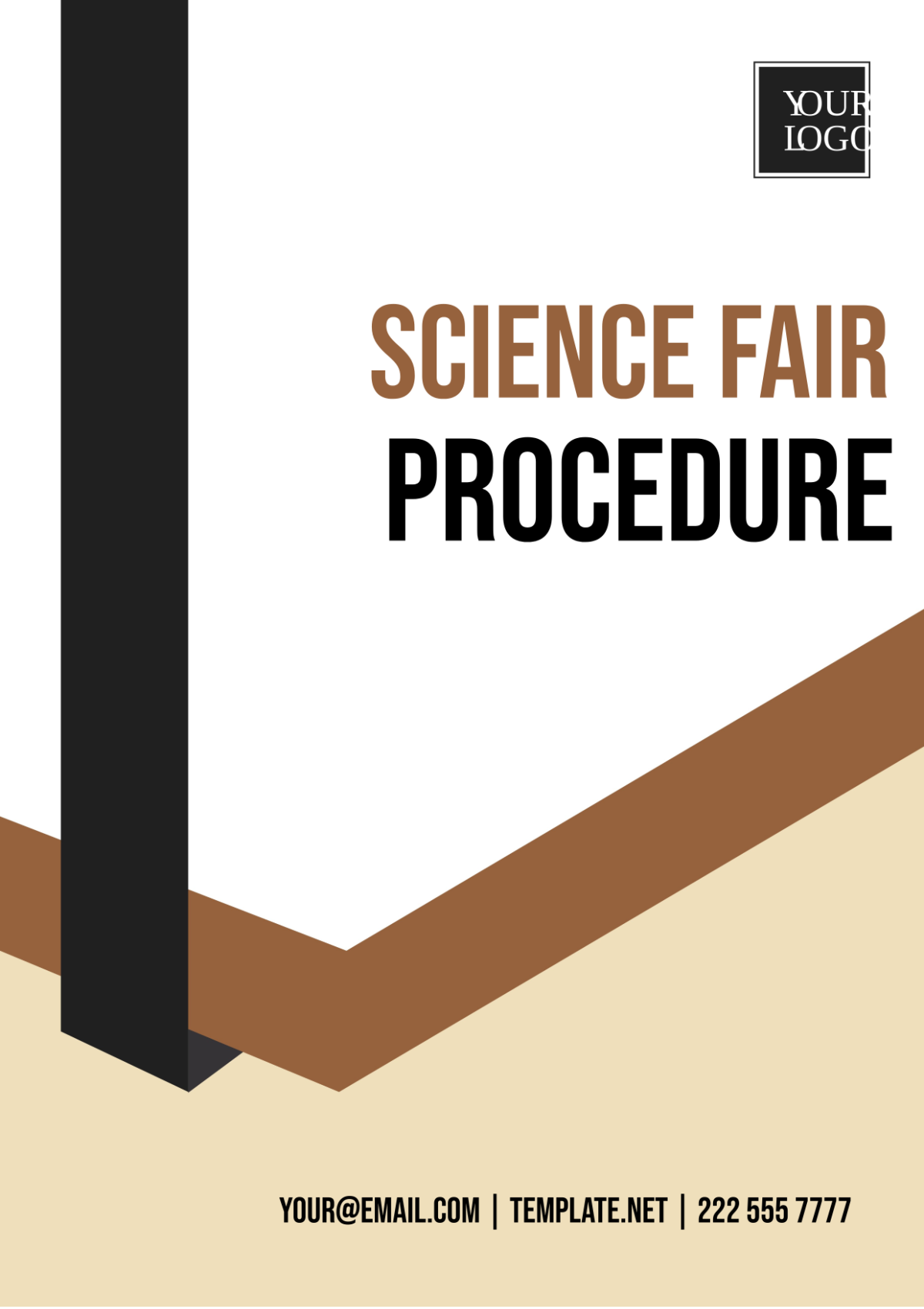Free Science Fair Procedure

Introduction:
This Science Fair Procedure Template is designed to guide [YOUR NAME] through the process of organizing and conducting a successful science fair project. By following this template, you can ensure clarity, consistency, and thoroughness in your project preparation and presentation.
Scope:
This procedure covers the essential steps involved in planning, executing, and presenting a science fair project. It provides a framework for [YOUR NAME] to follow from the initial idea generation phase to the final presentation of results.
Purpose:
The purpose of this procedure is to facilitate [YOUR NAME]'s successful participation in a science fair by providing clear guidance on each stage of the project development process.
I. Project Planning
Choose a Topic: Select a topic of interest that aligns with your scientific curiosity and the guidelines provided by the science fair organizers. Consider the feasibility and potential impact of your chosen topic.
Research Background Information: Conduct thorough research on your chosen topic to gain a comprehensive understanding of its background, significance, and existing knowledge gaps.
II. Hypothesis Formulation
Formulate a Hypothesis: Based on your research, develop a clear and testable hypothesis that addresses a specific question or problem related to your chosen topic.
Define Variables: Identify and define the independent, dependent, and control variables involved in your experiment.
III. Experimental Design
Design the Experiment: Develop a detailed experimental plan outlining the procedures, materials, and methods you will use to test your hypothesis.
Create Data Collection Procedures: Determine how you will collect, record, and analyze data during the experiment, ensuring accuracy and reliability.
IV. Data Analysis
Collect Data: Conduct experiments according to the established procedures, recording observations and measurements systematically.
Analyze Data: Use appropriate statistical or qualitative analysis methods to interpret the collected data and draw conclusions regarding your hypothesis.
V. Results Presentation
Prepare Visual Aids: Create charts, graphs, or other visual aids to present your data and findings in a clear and concise manner.
Develop a Presentation: Structure a presentation that effectively communicates your research question, hypothesis, methods, results, and conclusions to your audience.
VI. Project Display
Assemble Display Materials: Arrange your project display board or presentation materials in an organized and visually appealing manner, ensuring clarity and readability.
Practice Presentation: Rehearse your presentation to become comfortable with the content and delivery, incorporating feedback from peers or mentors as needed.
Additional Reminders and Tips:
Start early to allow ample time for each stage of the project.
Keep detailed records of your research, experiments, and results.
Seek guidance from teachers, mentors, or experts in your chosen field.
Have fun and stay curious throughout the science fair process!
Prepared By | Company Name | Department | Date |
|---|---|---|---|
[YOUR NAME] | [YOUR COMPANYNAME] | [YOUR DEPARTMENT] | [DATE] |
- 100% Customizable, free editor
- Access 1 Million+ Templates, photo’s & graphics
- Download or share as a template
- Click and replace photos, graphics, text, backgrounds
- Resize, crop, AI write & more
- Access advanced editor
Unlock the potential of your next science fair project with the Science Fair Procedure Template from Template.net. This editable and customizable resource provides a structured framework for organizing your experiment's methodology. Seamlessly adjust procedures to fit your project's requirements using our intuitive Ai Editor Tool. Elevate your presentation with clarity and precision.





























